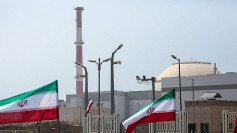The Institute for the Study of War (ISW) has issued a stark warning that Ukraine cannot hold its current defensive lines without the rapid resumption of U.S. military assistance, particularly in the form of air defense and artillery support. In a Tuesday blog post, ISW researcher Frederick W. Kagan highlighted the dire situation on the battlefield, stating that Russian advances will accelerate absent urgent American action.
According to Kagan, Russian forces have seized over 360 square kilometers (138 square miles) of Ukrainian territory since the beginning of this year, an area comparable to the size of Detroit. The lack of air defense has exposed Ukrainian front-line units to Russian aircraft dropping thousands of bombs on their defensive positions, while artillery shortages have allowed Russian armored columns to operate without suffering prohibitive losses for the first time since 2022.
The ISW report emphasized that only the United States can provide the critical air defense munitions and artillery shells Ukraine needs to remain in the fight. Kagan warned that U.S. policymakers must recognize that further delaying or stopping American military assistance will lead to dramatic Russian gains later in 2024 and 2025, ultimately resulting in a Russian victory.
Congress has not passed additional aid for Ukraine since the end of 2022, and available aid has been completely exhausted. While the Senate passed a roughly $95 billion national security package to fund Ukraine and other allies in February, the House has yet to act on the measure. House Speaker Mike Johnson (R-La.) has signaled his willingness to move on the Ukraine aid package this week, along with assistance to Israel and Taiwan, but faces potential removal from his position by at least two House Republicans who oppose the move.
The strategic maps published by the ISW illustrate the potential consequences of a Ukrainian battlefield defeat for NATO's eastern flank. Kagan warned that a defeated Ukraine, whether controlled directly by Russia or in a state of enforced neutrality or demilitarization, would put great pressure on NATO's eastern flank, particularly the Baltic states and southeastern Europe.
In such a scenario, Russia would likely prioritize cutting the Suwalki Corridor between northwestern Belarus and the Russian exclave of Kaliningrad to prevent NATO from reinforcing or supplying the Baltic states while Russian armored and airborne units seize the region. Moscow would hope to prosecute its offensive with such speed that major NATO allies like the U.S., France, Germany, and the United Kingdom would not have time to respond.
Kagan argued that a victorious and Western-aligned Ukraine would undermine Russia's plans by consuming the forces Moscow might otherwise dedicate to an attack on the Baltic states. He noted that generating the necessary Russian combat power to take the Baltic states with a reduced strike force would likely require reinforcement from central Russia, resulting in a larger and slower mobilization that NATO could detect and respond to.
On the battlefield, Russian forces are now advancing on Chasiv Yar in the eastern Donetsk region, and capturing the town could open a path to the larger cities of Kramatorsk and Sloviansk. The ISW has previously assessed that Russian forces plan to take Chasiv Yar by early May, indicating that Moscow believes it can advance faster against a struggling Ukrainian army.
Defense Secretary Lloyd Austin, in a House Appropriations hearing on Wednesday, warned that Russian President Vladimir Putin "believes that he can wait us out" and that "the resolve of the Western countries will soon fade and our coalition will fracture."
Kagan concluded that if the U.S. abandons Ukraine, Russia will take Kyiv and push against NATO's border up to Poland. However, if Washington steps in to support Ukraine, it could become one of the largest and most powerful militaries in Europe, making a Russian attack on NATO much more difficult, risky, and costly for Moscow.






